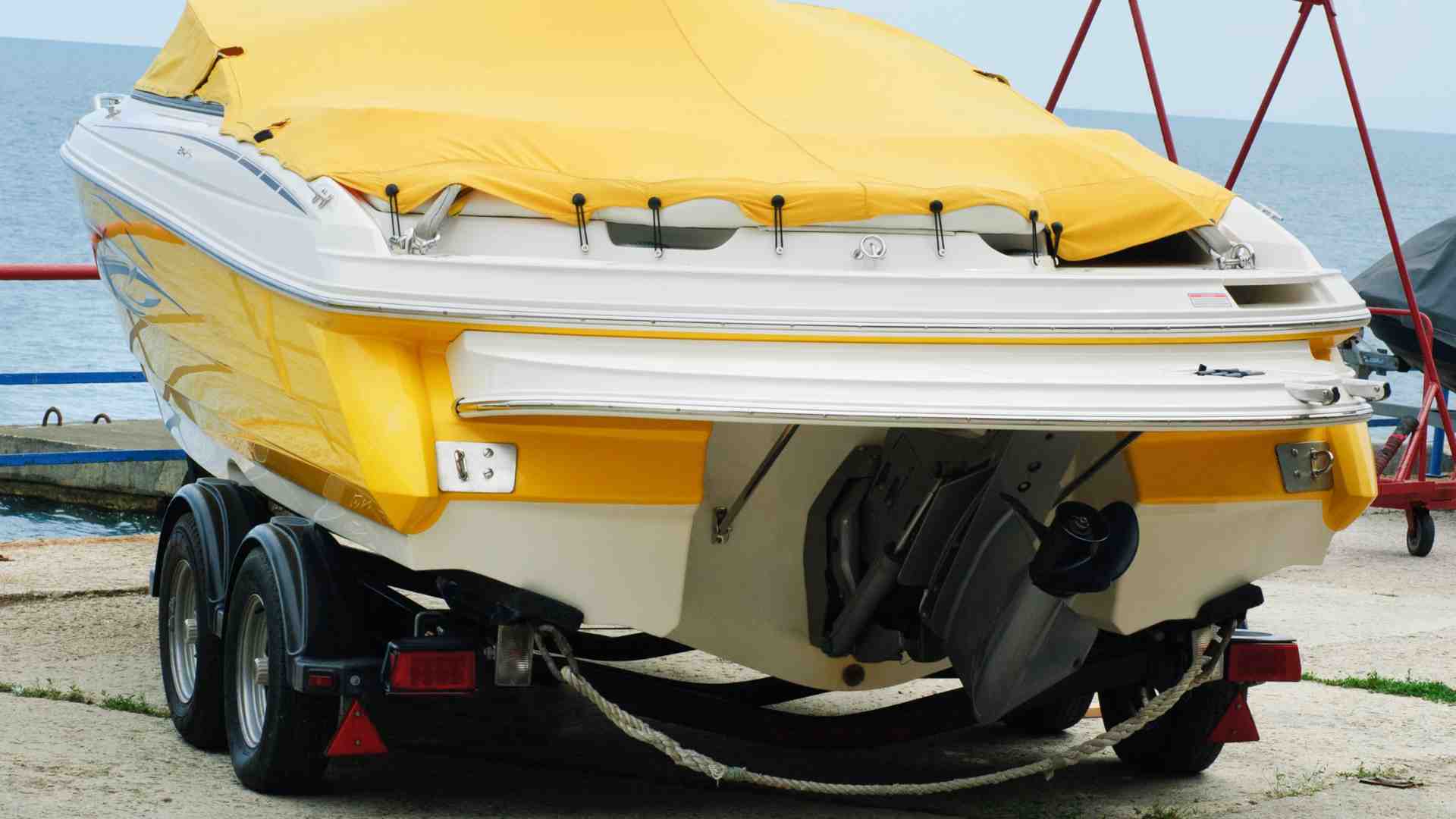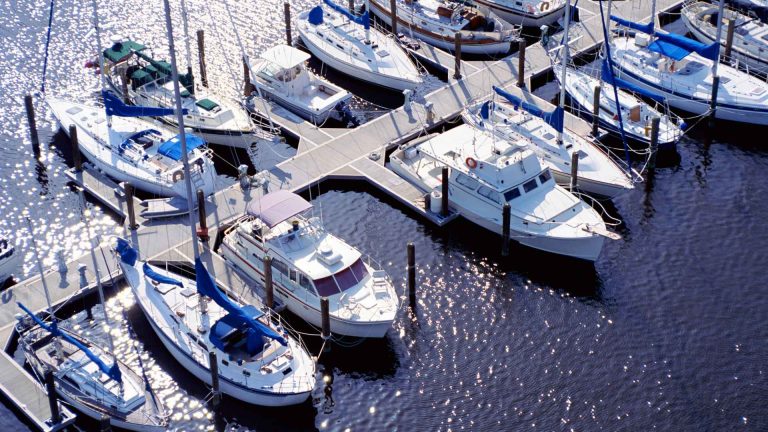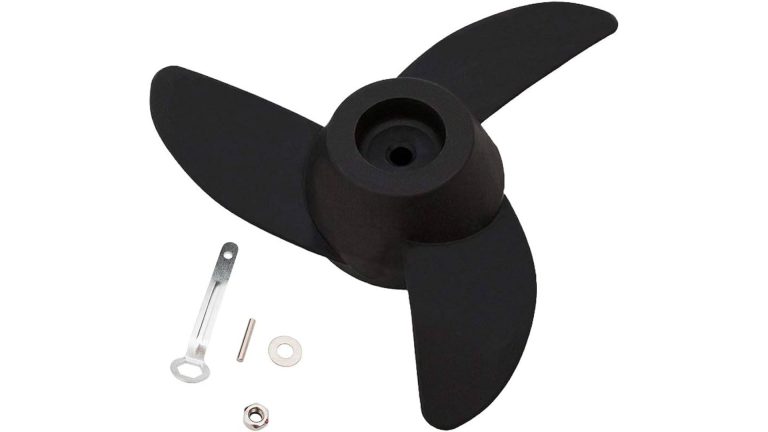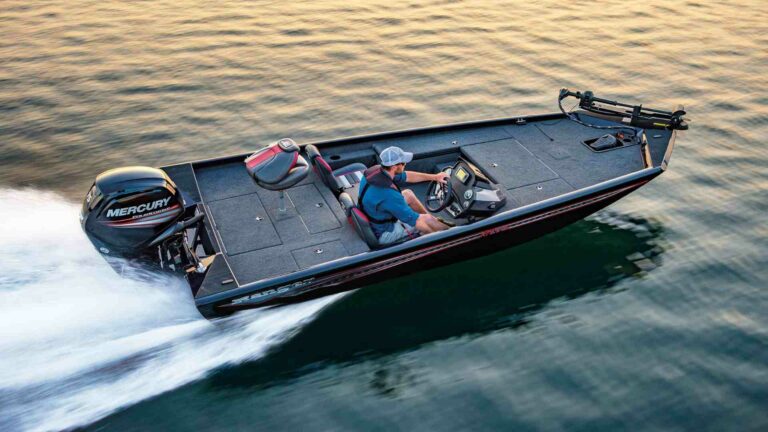10 Steps to Properly Trailer a Boat and Launch It at a Ramp
Picture the sun glistening on the water’s surface, the gentle sway of the waves, and the thrill of embarking on a boating adventure. Yet, amidst this excitement, lies a crucial step that sets the tone for your nautical journey: the art of trailer launching and ramp maneuvering.
As any seasoned boater knows, a successful launch can mean the difference between a smooth voyage and a rocky start. Navigating the process with finesse not only ensures your vessel safely reaches the water, but also contributes to the seamless flow of boat ramp traffic and the overall safety of everyone involved.
Consider this article your personal compass, guiding you through the intricate dance of trailer launching and ramp maneuvering. It’s not just a set of steps; it’s a comprehensive guide designed to empower you with the knowledge and skills to master this essential aspect of boating. From understanding the equipment to executing the maneuvers with confidence, you’re about to embark on a journey of expertise that guarantees safe and successful launches.
So, whether you’re a seasoned captain or a novice sailor, buckle up for a deep dive into the world of trailer launching and ramp maneuvering. Prepare to enhance your boating experience, ensuring that every launch becomes a gateway to adventure, tranquility, and the open waters that beckon you forward.
1. Pre-Launch Preparation
Before your vessel takes its aquatic leap, the importance of pre-launch preparation sets the stage for a seamless and safe experience. Much like a captain inspecting their ship before setting sail, taking the time to assess your boat and trailer conditions is a vital step that guarantees a successful launch.
Imagine arriving at the boat ramp, excitement coursing through your veins, only to be halted by a malfunctioning trailer light or a flat tire. This scenario highlights the significance of pre-launch preparation – a process that involves meticulously checking all elements of your boat and trailer to ensure they’re in optimal working condition.
Start by examining the lights on your trailer, ensuring they are operational and properly connected to your towing vehicle. Lights not only ensure your safety but also contribute to the safety of fellow boaters during early morning or late-night launches.
Next, turn your attention to the tires. Proper tire inflation is essential for a smooth journey from your home to the ramp. Check the tire pressure and tread depth to prevent any mishaps on the road or at the launch site.
Brakes are another critical component. Test your trailer’s braking system to ensure it’s responsive and effective. Functional brakes are paramount when navigating ramps and launch areas, especially when dealing with steep inclines or wet surfaces.
Don’t forget the hitch that connects your trailer to your towing vehicle. Ensure it’s securely fastened and properly aligned with the towing ball. A properly connected hitch prevents accidents during loading and unloading.
In essence, pre-launch preparation transforms your launch process into a well-choreographed dance. Each step, from checking lights to evaluating brakes, plays a pivotal role in ensuring your boating experience begins on the right note. By dedicating time to thorough preparation, you’re not just setting your vessel up for success – you’re also contributing to the overall safety and efficiency of the boat ramp, creating a harmonious environment for all.
2. Choose the Right Ramp
As you approach the water’s edge, the significance of choosing the right boat ramp becomes evident. Just as a captain navigates their vessel through varying conditions at sea, selecting an appropriate boat ramp sets the tone for a smooth and successful launch.
Consider factors such as water depth, slope, and accessibility. Water depth is crucial to ensure your vessel can be properly launched without running aground or damaging the hull. An ideal ramp should offer sufficient water depth to accommodate your boat’s size and draft.
The slope of the ramp also plays a pivotal role. A gradual slope makes for an easier launch, allowing your boat to enter the water smoothly. On the other hand, a steeper slope might necessitate additional care during the launch process.
Accessibility is another key consideration. Choose a ramp that provides ample space for your towing vehicle and trailer to maneuver. An overcrowded ramp can lead to frustration and delays, while a well-designed and spacious ramp contributes to a stress-free launch experience.
In essence, selecting the right boat ramp is akin to finding the perfect stage for a performance. It’s about creating an environment where your vessel can gracefully enter the water, unhindered by obstacles or challenges. By understanding the importance of water depth, slope, and accessibility, you’re ensuring that your launch process aligns with your expectations – a seamless, confident entry into the open waters that await you.
3. Backing Up the Trailer
As you stand at the helm of your towing vehicle, mastering the art of backing up the trailer is a pivotal step in the launch process. Like a conductor guiding their orchestra, precise maneuvers and clear communication are key to ensuring a seamless performance.
Start by utilizing your vehicle’s side mirrors to monitor the position of the trailer. Adjust them to provide a clear view of both sides of the trailer and the surrounding area. This visual aid helps you make informed decisions while maneuvering in reverse.
Communication is paramount when backing up the trailer. Establish hand signals with a helper who stands outside the vehicle, guiding you with gestures that indicate left, right, and stop. This real-time feedback eliminates confusion and ensures synchronized movements.
Remember that patience is your greatest ally. Gradual, slow movements allow you to make precise adjustments as you navigate the trailer into position. Avoid sudden movements, which can lead to overcorrection and potential mishaps.
Prior to arriving at the boat ramp, consider practicing backing up in an open area. This rehearsal hones your skills, boosts your confidence, and familiarizes you with the intricacies of trailer maneuvering. The more you practice, the more comfortable and skilled you become, transforming the act of backing up into a confident and calculated routine.
In essence, backing up the trailer is a symphony of coordination and finesse. As you become attuned to the nuances of mirrors, hand signals, and controlled movements, you’re orchestrating a seamless maneuver that guides your vessel toward its aquatic debut. Your trailer becomes an extension of your intentions, and your confidence transforms each backward movement into a masterful display of boating prowess.
4. Aligning the Boat

As the boat gently cradles the water’s edge, the final act of aligning it with the trailer marks the culmination of your launching journey. This delicate maneuver requires precision and attention to detail, ensuring that your vessel is perfectly positioned for its seamless transition from land to water.
Begin by utilizing guides, markers, and visual cues. Many boat ramps feature guideposts that assist in aligning the boat with the trailer. These guideposts offer a clear path for your vessel to follow, ensuring that it remains centered during the alignment process.
Markers and visual cues also play a vital role. Consider using colored tape, stickers, or even distinct objects to mark the ideal alignment points on both the boat and the trailer. These markers serve as reference points, allowing you to gauge the alignment with accuracy.
As you inch your boat toward the trailer, keep a keen eye on these markers and visual cues. Make gentle adjustments as needed to ensure that the bow, stern, and sides of the boat align symmetrically with the trailer. This meticulous attention guarantees that your vessel is poised for a smooth ascent onto the trailer.
In essence, aligning the boat is a dance of precision and awareness. With guides, markers, and visual cues as your partners, you’re orchestrating a graceful convergence of boat and trailer. The result is a harmonious alignment that sets the stage for a flawless transition, allowing your vessel to reclaim its aquatic realm with confidence and finesse.
5. Launching the Boat
As the moment of truth arrives, launching your boat becomes an exhilarating culmination of preparation, skill, and anticipation. This process involves delicately releasing your vessel from the trailer while maintaining absolute control, ensuring a smooth transition from land to water.
Begin by backing the trailer down the ramp until the boat’s stern is slightly above the water’s surface. At this point, shift your vehicle into park, engage the emergency brake, and ensure the trailer wheels are chocked to prevent any movement.
With the boat’s stern gently afloat, release the bow strap or winch hook, allowing the boat to slide off the trailer. Maintain a firm hold on the boat’s bow line to control its descent and prevent it from drifting too quickly into the water.
As the boat enters the water, maintain a steady pace and adjust your grip on the bow line to guide the boat away from the trailer. This controlled release ensures that your vessel eases into the water without sudden movements or disturbances.
Throughout the process, your focus should remain unwavering. The importance of maintaining control cannot be overstated. By exercising deliberate movements and a steady hand, you’re ensuring that your boat enters the water with poise and grace – a true testament to your expertise and diligence.
In essence, launching the boat is the climax of your trailer launching ballet. With the boat’s stern touching the water’s embrace and your hands guiding the bow line, you’re orchestrating a scene of controlled beauty. As your vessel slips into the water, you’re not just launching a boat; you’re launching a chapter of adventure, exploration, and the promise of memorable moments on the open waters.
6. Detaching and Parking the Trailer
After your boat gracefully meets the water’s surface, the process of detaching and parking the trailer comes into focus. This step marks the transition from launch to boat preparation, requiring careful attention to detail to ensure a safe and organized sequence.
Start by ensuring that your boat is properly secured in the water. Attach a dock line or anchor to prevent it from drifting away. With the boat stabilized, release the boat’s bow line and allow it to gently float in the water.
Next, shift your focus to detaching the trailer from the boat. Begin by engaging the trailer’s wheel chocks to prevent any inadvertent movement. Then, use the safety chains to ensure a connection between the boat and the trailer, providing an additional layer of security during the detachment process.
With the safety chains secured, reverse your vehicle, slowly and cautiously pulling the trailer away from the water. As you do so, the boat will gently float, now fully free from the trailer’s embrace.
Once the trailer is detached, make your way to a designated parking area. Properly park the trailer in a designated space, ensuring that it’s clear of any ramps or traffic lanes. This conscientious act contributes to the overall organization and efficiency of the boat ramp, creating a harmonious environment for all boaters.
In essence, detaching and parking the trailer is the final act of your launch performance. Just as a conductor guides their orchestra through the finale, your deliberate actions ensure that your boat is safely released and the trailer is parked with precision. By paying attention to the details and adhering to proper procedures, you’re completing the launch process with finesse and professionalism, setting the stage for a day of unforgettable boating adventures.
7. Parking the Vehicle
As your boat embarks on its aquatic journey, your vehicle finds its resting place, marking the conclusion of your launch adventure. The process of parking the vehicle is a vital step that contributes to the rhythm and flow of the boat ramp, ensuring a harmonious experience for all.
After successfully launching the boat, drive your vehicle away from the ramp area. Your goal is to find a suitable parking spot that doesn’t obstruct other boaters or impede the flow of traffic. Look for designated parking areas or spaces that are clearly marked for trailer parking. If no such designated spots are available, choose a spot that is out of the way and ensures that the ramp area remains accessible to other boaters.
Parking your vehicle thoughtfully reflects the respect you have for fellow boaters. Just as a conductor ensures that each instrument has its place in the orchestra, your careful choice of parking spot contributes to the overall harmony of the ramp. By selecting a suitable spot, you’re helping to create an environment where everyone can launch and retrieve their boats with ease and efficiency.
In essence, parking the vehicle is the final note in the symphony of launching. As you find a spot that respects the needs of others and maintains the accessibility of the ramp, you’re contributing to the cadence of successful launches and fulfilling experiences. Your thoughtful parking ensures that the curtain closes on your launch with a sense of camaraderie and shared respect among boaters – a fitting conclusion to a well-executed performance.
8. Returning and Retrieving the Boat

As your boating adventure draws to a close, the process of returning to the ramp to retrieve your boat becomes a symphony of coordination and patience. This encore performance requires precision and awareness to ensure a seamless and efficient retrieval process.
Begin by approaching the ramp area with a composed demeanor. As you near the ramp, keep an eye out for any cues or signs that indicate the availability of a slot. If the ramp is occupied, exercise patience and wait for your turn. Clear communication with other boaters fosters a cooperative atmosphere and minimizes congestion.
Once a spot becomes available, position your boat at a safe distance from the ramp, allowing enough space for other boaters to maneuver. Prepare your boat for retrieval by attaching a bow line and ensuring that all onboard equipment is secure.
As it’s your turn to retrieve the boat, slowly back the trailer down the ramp with deliberate movements. Use your mirrors and clear hand signals to guide the trailer into position. Aligning the boat with the trailer requires finesse – just as a dancer aligns their steps to the music. Utilize guides, markers, and visual cues to ensure that the boat is symmetrically positioned over the trailer.
Once aligned, gradually guide the boat onto the trailer by winching it forward. Maintain a steady pace, and be cautious of abrupt movements that could lead to misalignment or accidents.
Patience and clear communication with other boaters are paramount during this process. Avoid rushing and ensure that all involved parties have a clear understanding of their roles and responsibilities. By coordinating and cooperating, you’re contributing to a harmonious and efficient retrieval experience.
In essence, returning and retrieving the boat is the encore of your boating journey. With skillful alignment, patient maneuvers, and clear communication, you’re orchestrating a performance that concludes your adventure on a high note. As the boat gracefully ascends onto the trailer, you’re not just retrieving a vessel; you’re capturing the essence of successful boating and the camaraderie that unites boaters at the ramp.
9. Pulling Out of the Water
As your boating experience reaches its final crescendo, the process of pulling your boat out of the water becomes a finale that requires precision and attentiveness. This is the moment when your skill and careful execution culminate in a successful retrieval.
Begin by positioning your vehicle and trailer at the designated retrieval area near the ramp. As you approach the water’s edge, exercise patience and ensure that the ramp is clear before initiating the retrieval process.
Back the trailer down the ramp gradually, aligning it with the boat in the water. Use your mirrors and clear hand signals to guide the trailer into position. Just as a conductor guides an orchestra through a triumphant conclusion, you’re orchestrating the alignment of boat and trailer for a harmonious retrieval.
With the trailer in position, ensure that the boat is centered and aligned with the bunks or rollers. Slowly and steadily winch the boat onto the trailer, using the boat’s bow eye or a secure attachment point. Maintain control of the winching process, taking care not to rush or force the boat onto the trailer.
Keep a watchful eye on the boat’s alignment as it comes onto the trailer. The goal is to keep the boat centered and evenly distributed on the bunks or rollers. By doing so, you’re ensuring that the boat is securely and stably positioned for transport.
Taking your time during this process is essential. Just as a skilled performer savors the final notes of a masterpiece, you’re savoring the culmination of your boating journey by executing each step with care. Your deliberate actions ensure that the boat is retrieved smoothly, and its placement on the trailer is a testament to your skill and precision.
In essence, pulling the boat out of the water is the final act of your boating performance. With your boat securely positioned on the trailer, you’re concluding your adventure with a sense of accomplishment and satisfaction. As you pull away from the water’s edge, you’re not just transporting a vessel; you’re carrying with you the memories and experiences of a successful day on the water.
10. Securing the Boat and Trailer
With the boat now safely retrieved and perched on the trailer, the final act of your boating journey involves securing this precious cargo for the road ahead. Just as a maestro ensures that each instrument is safely stored after a performance, you’re responsible for securing your boat and trailer to ensure a safe journey.
Securing the boat and trailer is not only about protecting your investment but also about preventing accidents during transportation. Begin by ensuring that the boat is centered and snugly positioned on the trailer bunks or rollers. This foundational step sets the stage for the rest of the process.
Utilize straps or tie-downs to secure the boat to the trailer. These sturdy connections serve as the orchestra’s final notes, ensuring that your boat remains firmly in place throughout the journey. Anchor points on the boat and trailer are designed for this purpose, providing secure attachment points for the straps. Tighten the straps appropriately, making sure they’re snug but not overly tight, to keep the boat in place without causing damage.
If your boat is equipped with a cover, ensure that it’s properly secured in place. Just as a performer’s costume is handled with care, the boat’s cover protects it from the elements and road debris during transportation. Confirm that the cover is securely fastened, preventing it from flapping in the wind and potentially causing damage.
As you secure the boat and trailer, you’re finalizing the performance with meticulous attention to detail. This process not only ensures your boat’s safety but also contributes to the safety of others on the road. Imagine the straps and tie-downs as the strings of a virtuoso’s violin, harmonizing to create a symphony of security and reliability.
In essence, securing the boat and trailer is the closing note of your boating experience. With your boat safely in place and ready for transport, you’re concluding the journey with a sense of responsibility and accomplishment. As you drive away from the ramp, you’re not just towing a boat; you’re carrying with you the memories of the water and the promise of future adventures.
11. Cleanup and Departure

As the curtain falls on your boating excursion, the final act of cleanup and departure ensures that you exit the stage gracefully, leaving behind a clean and organized environment for others. Just as performers tidy their dressing rooms after a show, you’re responsible for tidying up the ramp area after launching and retrieving your boat.
Begin by stowing any equipment, gear, or personal belongings that were used during your boating adventure. Returning items to their designated spots is akin to resetting the stage for the next performance, ensuring that the ramp area remains clear and unobstructed.
Retract the trailer’s lights and tongue, ensuring that they’re securely positioned for transit. Much like a theater’s lighting crew adjusts spotlights and rigging, you’re making sure that the trailer is compact and streamlined for the road ahead.
Secure the boat to the trailer with straps or tie-downs, ensuring that it remains stable during transit. This final touch is like locking the stage doors at the end of a play, ensuring that everything is securely in place for the journey home.
Leaving the ramp area clean and organized is not only a mark of respect for other boaters but also a demonstration of good boating etiquette. Just as a performer leaves a stage ready for the next act, you’re ensuring that the ramp area is ready for the next boater’s adventure.
As you wrap up your boating experience with cleanup and departure, you’re making a lasting impression not just on the environment but also on the boating community. By leaving the ramp area as you found it – or even better – you’re contributing to the shared experience of boating and fostering a sense of camaraderie among fellow boaters.
In essence, cleanup and departure are the closing credits of your boating journey. As you drive away from the ramp, you’re not just leaving behind a spot on the water; you’re leaving behind a positive legacy of responsible boating and consideration for others.
Watch How to launch a boat at the ramp | Video
How do I properly align my boat with the trailer before launching?
To align your boat with the trailer, use visual cues like trailer guides, markers, or even a spotter’s assistance. Back up slowly and make small adjustments, using your mirrors to gauge alignment. Once the boat is centered, it’s ready for launching.
What’s the best way to release the boat from the trailer during launch?
Gradually release the boat from the trailer by gently easing it off the bunks or rollers. Keep a hand on the winch line to control the boat’s descent. Maintain control and avoid sudden movements to ensure a smooth launch.
How should I secure the boat to the trailer after retrieval?
Use straps or tie-downs to secure the boat to the trailer, attaching them to designated anchor points. Make sure the boat is centered and evenly distributed on the bunks or rollers. Proper securing prevents accidents during transportation.
What’s the process for cleaning up and departing after launching and retrieving the boat?
Clean up the ramp area by stowing equipment, retracting the trailer’s lights and tongue, and securing the boat for transit. Leaving the area clean and organized is courteous to other boaters and demonstrates good boating etiquette.
How do I choose the right boat ramp for launching and retrieving my boat?
Choose a boat ramp based on factors like water depth, slope, and accessibility. Ensure the ramp is suitable for your boat’s size and weight. Careful ramp selection contributes to a successful launch and retrieval experience.
Conclusion

As the final curtain draws on this comprehensive guide, you’ve now been equipped with the knowledge and insight to master the art of properly trailer launching and retrieving your boat at a ramp. The stage has been set for safe and successful boating adventures, where every step is a well-choreographed dance between you, your boat, and the water.
Throughout this guide, we’ve emphasized the importance of meticulous preparation, thoughtful alignment, and maintaining control at every stage of the process. Just as a conductor guides an orchestra through a performance, you’re now ready to orchestrate the symphony of launching and retrieving your boat with precision and confidence.
From pre-launch checks and aligning your boat with the trailer to safely releasing and securing it for transport, each step plays a vital role in the grand performance of boating. Remember, every move you make is a note that contributes to the harmony of a safe and enjoyable experience on the water.
Encourage yourself to use the comprehensive guide provided in this article as your trusted playbook. As you follow each step, you’ll navigate the launch and retrieval process with grace and finesse, ensuring that every boating adventure begins and ends on a high note.
With the knowledge and understanding gained from this guide, you’re poised to master the art of trailer launching and ramp maneuvering. As you embark on future boating escapades, may you find confidence in your abilities, security in your preparations, and a deep appreciation for the exhilaration of the water’s embrace.
So, as you lower your boat into the water or skillfully guide it back onto the trailer, remember that you’re not just moving a vessel – you’re creating memories, embracing freedom, and crafting stories that will be retold for years to come. Cheers to the open water, the thrill of the launch, and the satisfaction of a job well done!
Share Regulations for Boating in Marine Protected Areas (MPAs) with your friends and Leave a comment below with your thoughts.
Read Basics of Using Marine Radio for Communication until we meet in the next article.






